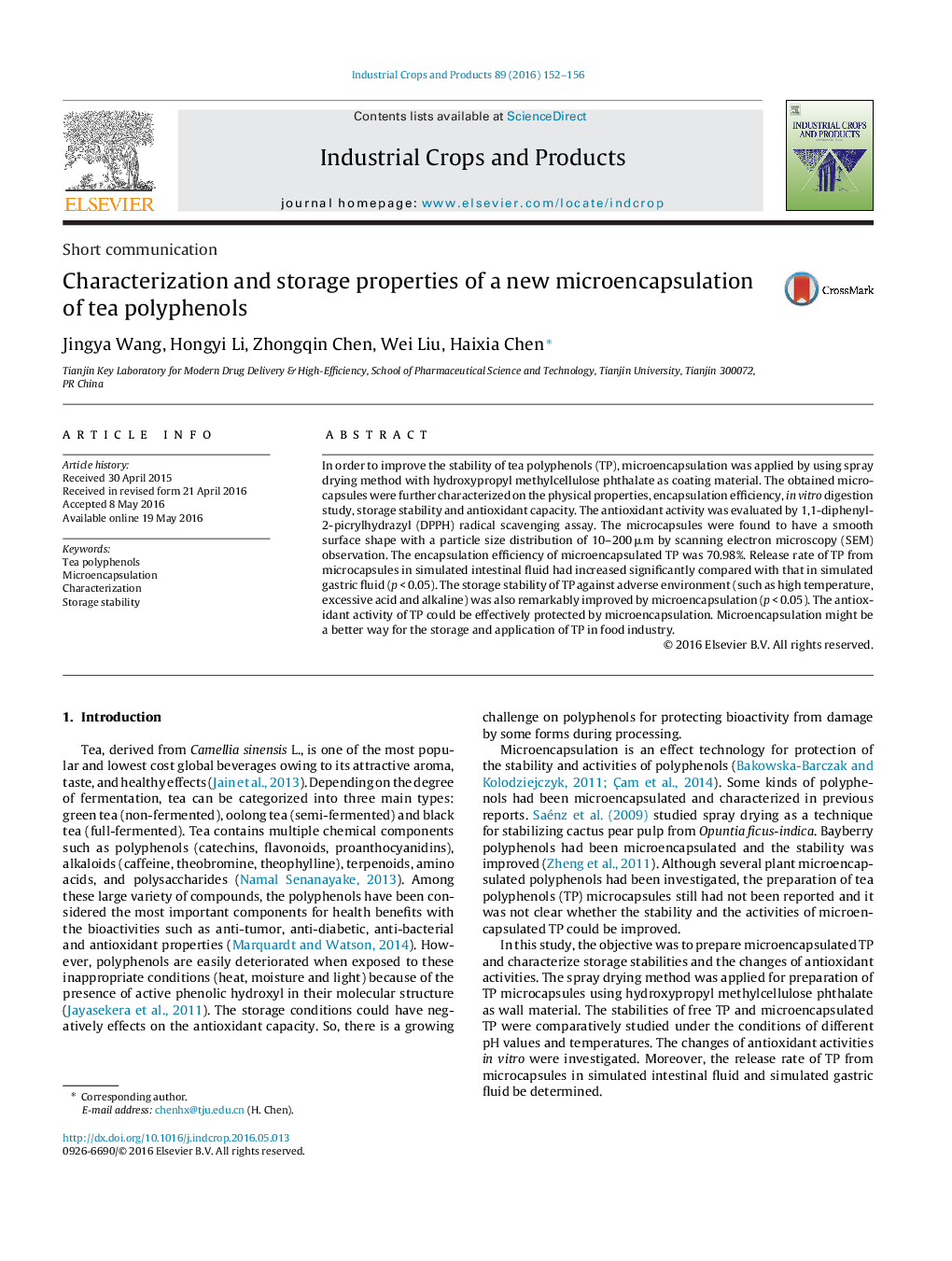| Article ID | Journal | Published Year | Pages | File Type |
|---|---|---|---|---|
| 4512108 | Industrial Crops and Products | 2016 | 5 Pages |
•Tea polyphenols (TP) were firstly microencapsulated by spray drying method.•The microcapsules were characterized by SEM and physicochemical methods.•The storage stability and antioxidant activity of free tea polyphenols (FTP) and microencapsulated tea polyphenols (MTP) were compared.•MTP showed good stabilities and antioxidant activities in vitro.
In order to improve the stability of tea polyphenols (TP), microencapsulation was applied by using spray drying method with hydroxypropyl methylcellulose phthalate as coating material. The obtained microcapsules were further characterized on the physical properties, encapsulation efficiency, in vitro digestion study, storage stability and antioxidant capacity. The antioxidant activity was evaluated by 1,1-diphenyl-2-picrylhydrazyl (DPPH) radical scavenging assay. The microcapsules were found to have a smooth surface shape with a particle size distribution of 10–200 μm by scanning electron microscopy (SEM) observation. The encapsulation efficiency of microencapsulated TP was 70.98%. Release rate of TP from microcapsules in simulated intestinal fluid had increased significantly compared with that in simulated gastric fluid (p < 0.05). The storage stability of TP against adverse environment (such as high temperature, excessive acid and alkaline) was also remarkably improved by microencapsulation (p < 0.05). The antioxidant activity of TP could be effectively protected by microencapsulation. Microencapsulation might be a better way for the storage and application of TP in food industry.
